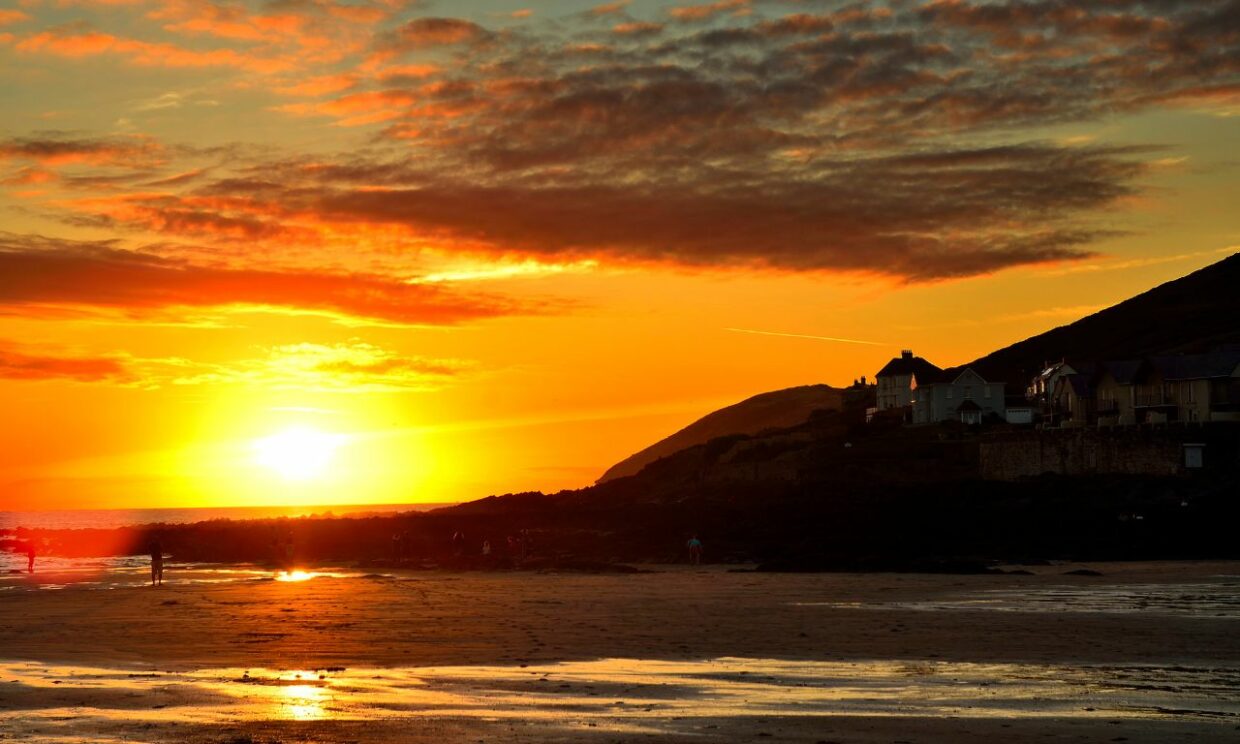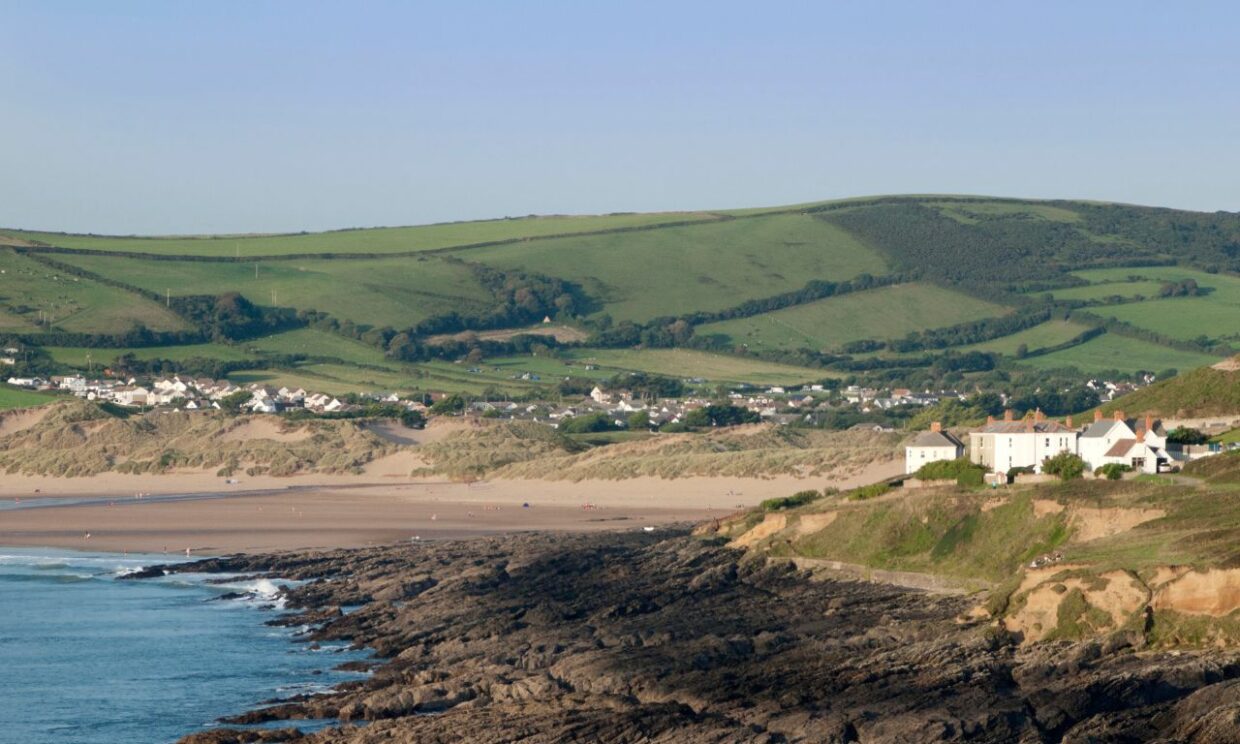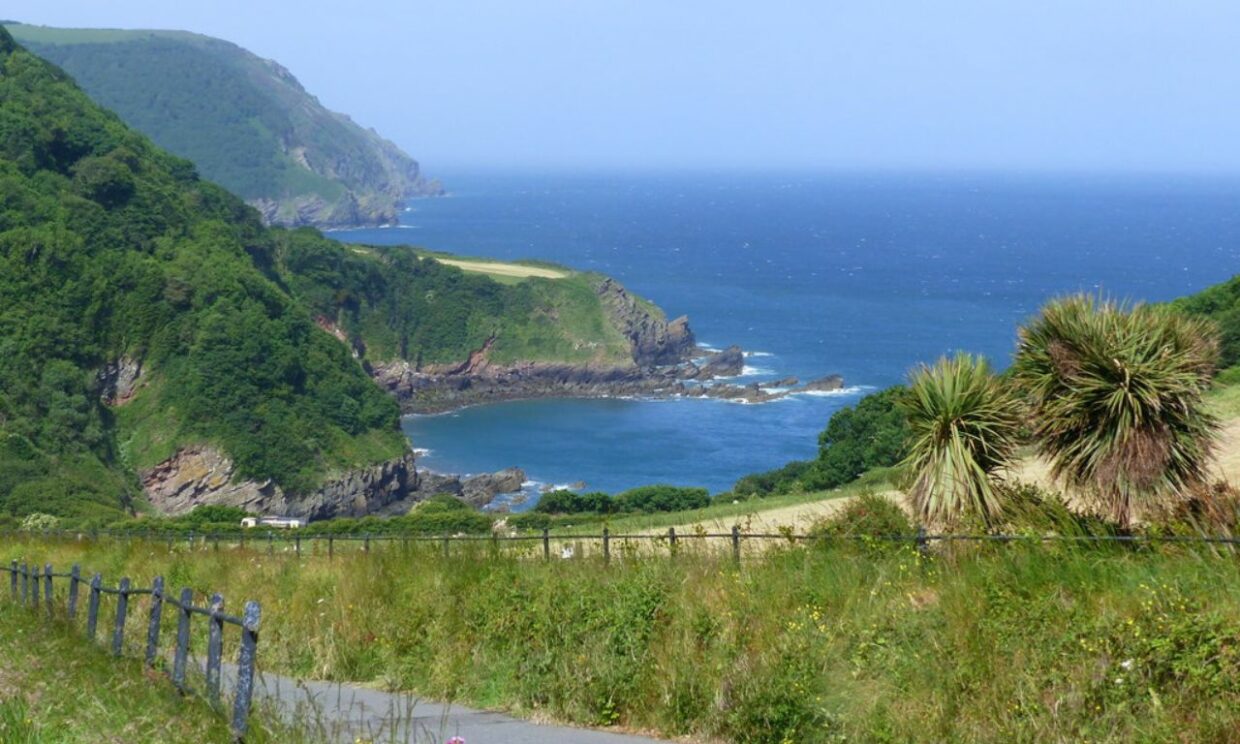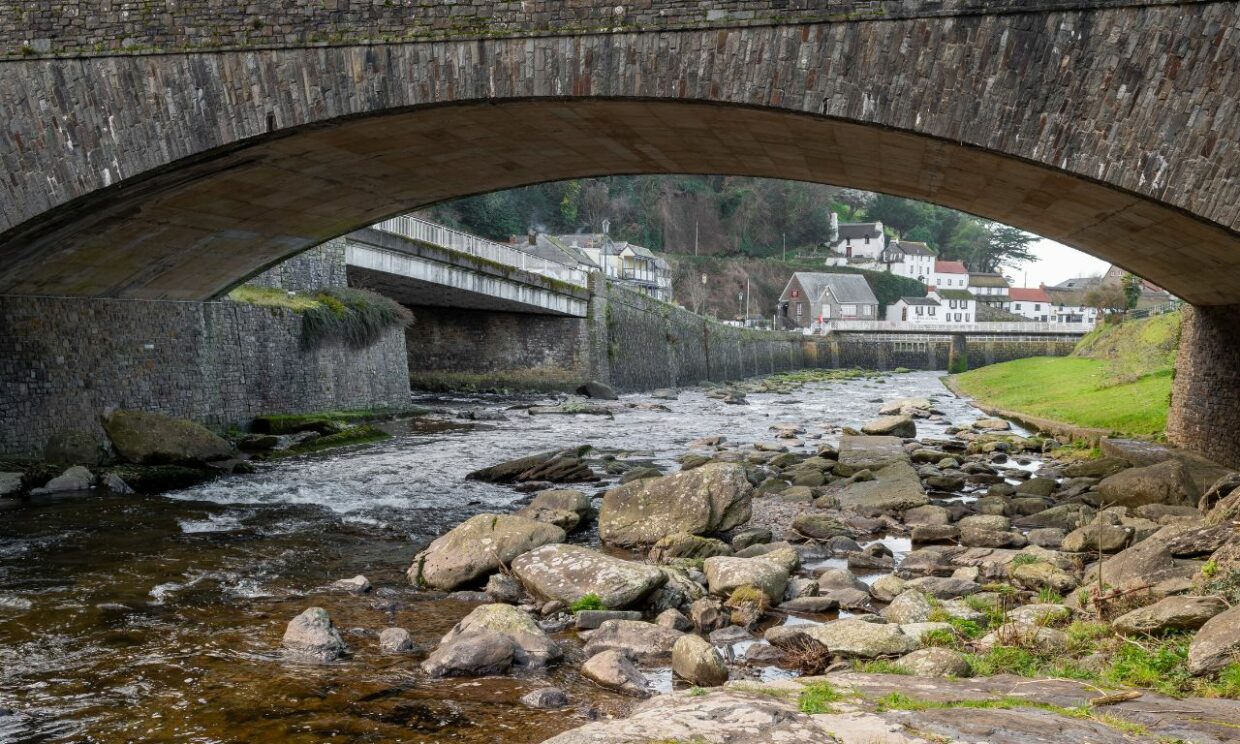North Devon is a fascinating place, with 171 square kilometres (66 square miles) of coastline designated as an Area of Outstanding Natural Beauty. Explore its dramatic coastlines with rugged cliffs, coves, and beautiful beaches. Venture inland to discover Exmoor National Park, with its beautiful rolling Devon countryside and wild ponies. You can wander through at least seven beautiful villages in North Devon along the way.
I’m lucky enough that my parents live in this area, so I get to visit regularly and am never disappointed. North Devon is full of untouched areas, charming villages, and intriguing north Devon towns. And, of course, if you get tired, there are always plenty of tea rooms where you can enjoy a Devon cream tea.
Coming your way in this post - click to expand ->
7 Beautiful Villages To Visit in North Devon
These quaint villages are enchanting, whether basking in the sun or on a stormy winter’s day. So let us take a look. Here are seven beautiful villages in North Devon to entice you.
1. Clovelly

Clovelly is a picturesque fishing village positioned in a gorgeous setting. Fairytale style cottages line steep cobbled streets. Not only is it one of Devon’s prettiest, but it is also world-famous for its lobsters and crabs, served in French and Spanish restaurants.
Clovelly celebrates its sustainably caught lobster and crab by local fishermen through its famous Lobster and Crab Feast. The village and its iconic harbour are alive with music, local food and craft stalls. Street entertainment thrills children with games, magic, and balloon modelling. Of course, there is an abundance of freshly caught lobster, and crab dishes to savour, washed down with plenty of local ale.
Clovelly was once part of an estate owned by William the Conqueror, The King of England. The estate remained in the hands of royalty for many years until the Hamlyn family inherited the village. It has remained in the same family since 1738.
The village entrance fee is paid at the Visitor Centre at the top of the hill, in the parking area.
Clovelly is a favourite place for many visitors who delight in colourful houses and beautiful hanging baskets. However, Clovelly’s donkeys are probably its most famous residents. Clovelly is a traffic-free zone, and donkeys are its primary form of transport, carrying goods back up the winding, narrow streets after the products have been brought down the hill by sledge.
2. Appledore

Appledore is a picturesque fishing village with pastel coloured houses and is a firm favourite with locals and tourists.
The village has a rich maritime history, dating back to 878 AD when the Vikings invaded. Appledore is famous for its boat building, and after being closed for 60 years, it once again came to life in 2021. The village can share many a secret tale about smuggling and pirates. You can learn more at the North Devon Maritime Museum in Appledore, where there is plenty to entertain adults and children.
Take a visit to the Hockings ice cream factory in Appledore. The family-run business has been making award-winning ice cream for over 85 years. In that time, they have won over 80 awards.
If you love to enjoy the delights of the local produce of the south west, Appledore provides in quantities when it comes to the fishing industry with freshly caught seafood. Cod, bass, cockles, and mussels are some favoured choices. You can sit on the quay and relish fish and chips while watching the world go by in the pretty Taw and Torridge estuary where the Taw and Torridge rivers meet.
Once you have checked out the local independent shops selling regional crafts, antiques, and handmade jewellery, climb aboard the seasonal ferry and take a trip across the River Torridge estuary to the village of Instow.
Instow is another quaint village, so worth a look. However, our next stop is Braunton.
3. Braunton

Rumour has it that Braunton is the largest village in England. It is also the gateway to the fabulous beaches at Croyde and Woolacombe. Braunton is a popular destination owing to its prime location surrounded by rolling hills and North Devon towns and villages, including the bustling Barnstaple, North Devon’s largest town.
Braunton is home to Braunton Burrows. A vast sand dune system, one of the largest in the British Isles. A UNESCO Designated Biosphere Reserve protects the habitat of many rare plants and insects. During the summer, the Burrows are awash with the colours of 470 species of plants and flowers. Grazing Devon Reds, cattle indigenous to North Devon and ponies roam freely to manage the land.
Climbing the dunes is challenging but worth the effort for the fabulous views of the meandering Taw estuary, Lundy Island and picturesque towns and villages. Due to its rugged terrain, the area was used during WWII for DDay Training and remains a military training ground today.
Due to its accessible position to attractions, a short drive away is the pretty market town of South Molton and the nearby award-winning Quince Honey Farm. The farm is a working honey farm and provides enough entertainment for a full day out for the entire family.
4. Croyde

Croyde is famous for its top-class surfing. If watersports float your boat, Croyde is a place to visit. It is about five miles from Braunton. The area is an eclectic mix of a relaxed village feel and an exciting surfing vibe.
Croyde Beach is about 700 metres wide and about 700 metres from the sea at low tide during spring tides. Although recognised for its excellent surfing conditions, it is a place for everyone. If you have never surfed before and want to give it a try, there are plenty of opportunities to rent gear and book lessons.
During the summer season, the village hosts the Croyde Deckchair Cinema in the village hall. It is a fun way to spend a summer evening relaxing in a deckchair, watching a family-friendly classic, and eating popcorn.
Twenty-five years ago, Croyde began holding its summer festival, Goldcoast Oceanfest. The festival takes place on North Devon’s golden coast and is fun for all. From surfers to sun-worshippers, watersports, beach fun, and entertainment for all the family.
Croyde is between the beaches of Saunton Sands and Woolacombe Bay, with three miles of golden sand to explore. Several walks start from the village, including joining the south west coast path to Baggy Point, which offers spectacular views of Bideford Bay and Hartland. If you find it thirsty work, there are plenty of North Devon’s finest pubs with thatched roofs perfect for refreshments.
5. Mortehoe

A mile along the coast from Woolacombe is the tiny village of Mortehoe, which remains untouched. The golden beaches transform into secluded bays with rock pools to explore. Turning over rocks and searching for hidden sea creatures makes rock pooling fun for the entire family. Including your dog, as the beach is dog-friendly year round.
Mortehoe village sits tall at the top of Chapel Hill with stunning sea views across Woolacombe Bay and the Bristol Channel in one direction. On the other, you can see Lundy Island and beyond to the Atlantic Ocean.
Mortehoe is a pretty village with a friendly atmosphere. In the summer, you can climb aboard a tractor and trailer safari. Starting from the Mortehoe museum, the safari is ideal for those who want to rest their legs and still see the breathtaking scenery and rolling hills of the north Devon coast. The ride is suitable for all weather and takes you to Bull Point lighthouse. You might spot some seals basking in the sun.
Many ships have fallen victim to the rugged north Devon coast, and since 1879 there has been a lighthouse at Mortehoe to keep sailors safe during the stormy weather.
Mortehoe is Woolacombe’s quiet neighbour. A hidden gem among the more popular beach destinations. Although more peaceful with fewer tourists, it offers a variety of accommodations and dining options, including the quirky Barricane Beach Cafe. A popular beach cafe craned in at the start of the summer season and out at the end. It is famed for its Sri Lankan curries, although weather dependent, due to its location on the beach.
6. Lee

Lee village is a secret gem, hidden at the end of narrow lanes. Locals refer to the quiet village as ‘Fuschia Valley.’ When the flowers bloom, the hedges are on fire with scarlet flowers. The quaint village is a mixture of old and new, with thatched houses and those of a more contemporary style.
Lee Bay is a rocky cove surrounded by an impressive coastline. Many consider it to be the crown jewel of Lee. The bay is an excellent place for swimming and rock pooling. The tide can be strong sometimes, but a beautiful sandy beach emerges as the tide falls.
The village boasts five walks leading off to explore the scenery surrounding the beautiful village. The various paths take you to explore ancient woodlands, open heathland, hidden valleys, and the coast.
The local village pub, The Grampus Inn, is family-owned. Some of the building dates back to the 14th century, and it was a working farm until the 1970s when it became a pub. They pride themselves on homemade, local food. The welcoming pub does not stop with food. It distils its popular gin and brews five different ales. Locals and tourists enjoy it all.
7. Lynton and Lynmouth

Lynton and Lynmouth are two of the prettiest villages in the breathtakingly beautiful Exmoor National Park. They are close to Combe Martin, located on the highest point of the Coast Path.
A water powered Cliff Railway joins the sister towns. Lynton is a Victorian town perched high on a hill. Whereas Lynmouth is a quaint village with its thatched cottages, straddling the East Lyn River below.
The Cliff Railway is an impressive example of Victorian engineering. It was purposefully built in 1888 to join the two towns. The incredible accomplishment climbs 152 metres (500 feet) over 262 metres (862 feet) of tracks. It is the highest and steepest railway in the world, solely powered by water.
Lynton is a town high on Glyn Lyn Gorge, offering spectacular views over the Bristol Channel. Lynton is home to the iconic town hall built in a medley of styles, such as mock Gothic, neo-Tudor, and art nouveau. There are also a few independent shops and a cinema in a Grade II-listed former Methodist Church.
Lynton’s Toy Museum is a fascinating place to visit. It might be small, but it is crammed full of toys, games, and action figures. Whatever your age, the museum provides fun and nostalgia.
Lynmouth is in a beautiful seaside location and is often called ‘Little Switzerland’ because of its magnificent surrounding scenery. It is popular with walkers and kayakers.
Frequently Asked Questions
What Is the Nicest Part of North Devon?
Ilfracombe is a charming seaside town in a stunning position on the dramatic North Devon coastline, with rock pools and sandy beaches. The South West Coast path makes it a walker’s paradise. It is steeped in a history of smugglers, with a network of underground caverns to explore.
What Is the Prettiest Village in Devon?
Clovelly tops Devon’s list of prettiest villages and is probably one of the most beautiful in the UK.
Where Should I Live in North Devon?
The North Devon town of South Molton features as one of the best towns to live in the UK.
Final Thoughts
Our list of seven beautiful villages in North Devon lists only some of the most enchanting in the region. There are many more, from inland moorland positions to sandy beaches and craggy coastlines.
Whether you thrill in watersports, unwind on glorious beaches, take a stroll on a riverside walk or a more challenging hike on the dunes of the Braunton Burrows. Or enjoy the solitude of unspoilt moorland. North Devon offers something for everyone.
After your day of activity, you can find traditional thatched pubs up cobbled streets, offering locally-sourced food and regionally brewed ale.
North Devon is a destination for all the family.
